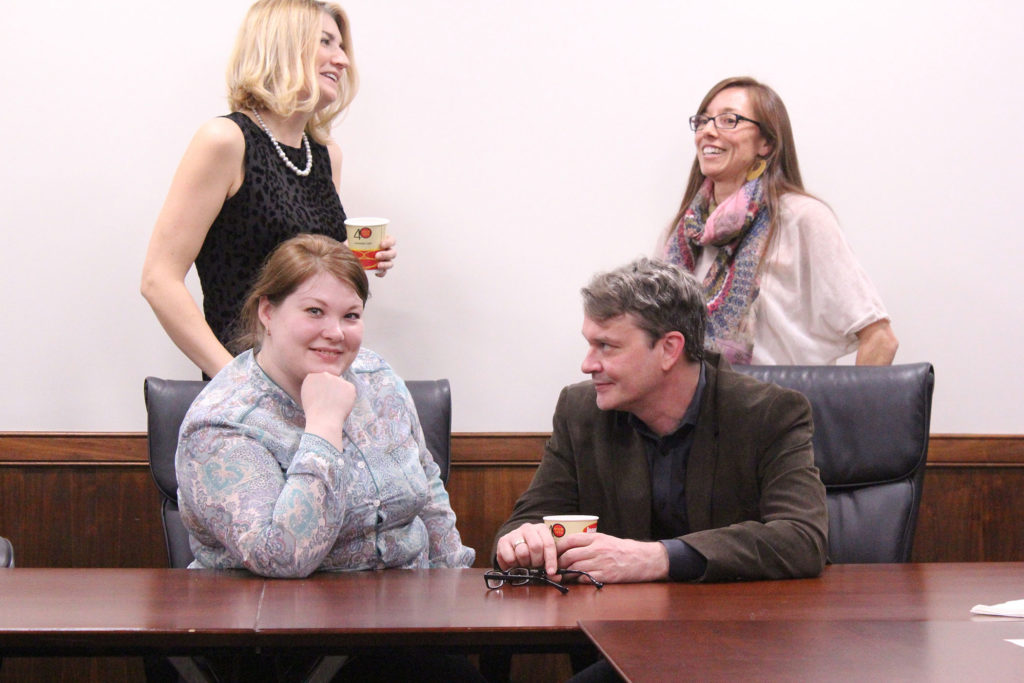Creating innovative materials to teach Russian grammar is a challenging task. But with the development of new technologies that allow for cross-cultural communication, both students learning a second language and faculty members conducting cutting-edge experiments can tackle these challenges head on from thousands of miles apart.
As part of a program sponsored by the Eurasia Foundation U.S.-Russia University Partnership grant, four UGA faculty members from the College of Education and the Franklin College of Arts and Sciences traveled to Moscow and Khabarovsk, Russia, to collaborate with key experts in the fields of second language acquisition, cross-cultural communication and educational technology.
“The purpose of the university partnership grant is to get faculty at our institution and a partner institution talking about new ideas, enhancing foreign language education and organizing instruction in general,” said Victoria Hasko, an associate professor in the College of Education’s language and literacy education department who serves as the grant’s project director and principal investigator. “It’s an opportunity for faculty to collaborate and decide what avenues of their work they want to explore.”
In addition to exchanging ideas on future projects, faculty members conducted experimental studies on bilingualism and cognition using eye-tracking methodology, as well as developing web-based teaching materials for second language learners.
“We are trying to approach teaching Russian from a conceptual or cognitive angle using tele-collaboration to get our students interested,” said Tatiana Khrushcheva, an associate professor of linguistics at the Pacific National University in Khabarovsk, Russia.
Russian language speakers encode space and time differently than English native speakers, and teaching students how to understand verbs of motion on a cognitive level is a difficult feat for educators. The grant team is working on developing teaching materials that expand beyond translational work and focus more on meaning and concepts that exist between the two languages.
Khrushcheva and her colleagues visited UGA earlier this year to investigate the use of digital tools in the field. Both she and Hasko are working with Keith Langston, a professor of Slavic studies and linguistics, and Olga Thomason, a lecturer in Russian, to improve online instructional materials and enhance language acquisition.
As part of the study, UGA and Russian students communicated via Skype, WhatsApp and email. One assignment asked Russian students to translate texts and provide a written copy of the translation in English to UGA students. The latter group then recorded an audio file pointing out errors and giving suggestions for improvement to their Russian partners.
“This contact gives an insider’s point of view on many conflicting cultural situations and ambiguous cultural concepts that complicate intercultural communication,” said Thomason. “The idea was to use course tasks as a starting point for intercultural communication between the UGA and Russian students.”
The last component of the linkage grant allowed faculty members to discuss the use of educational technology in the classroom. Nicholas Holt, the director of innovation and technology in the College of Education, shared the benefits of using technology as a teaching tool.
“All of these exchanges as the planet gets smaller are important bridges to be built,” said Holt. “I wanted to push a bit outside of the comfort zone and say there might be some things that are outside of the cultural norm that get students excited or keep faculty engaged.”
